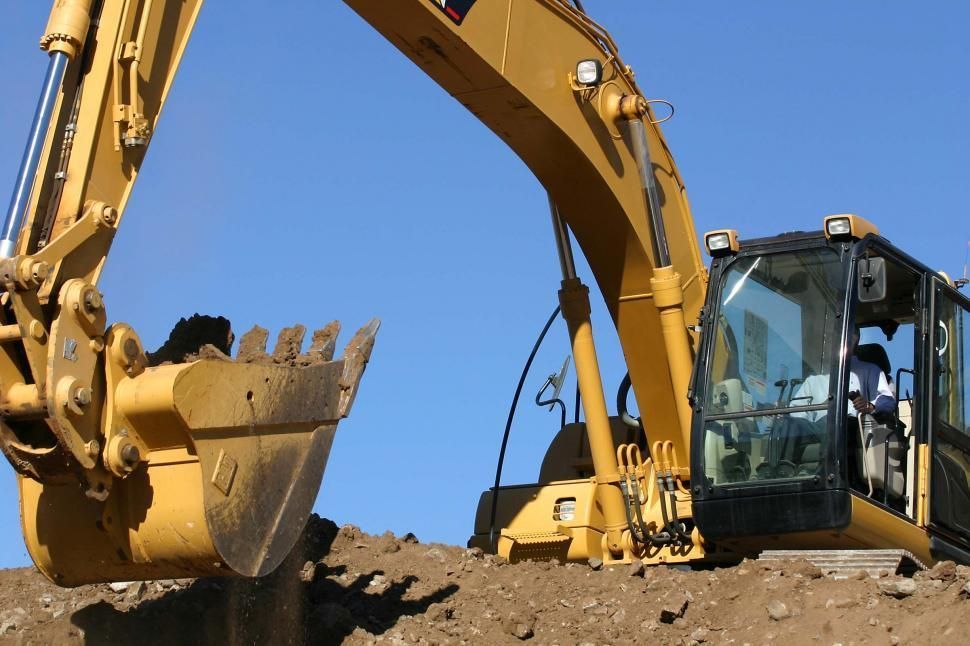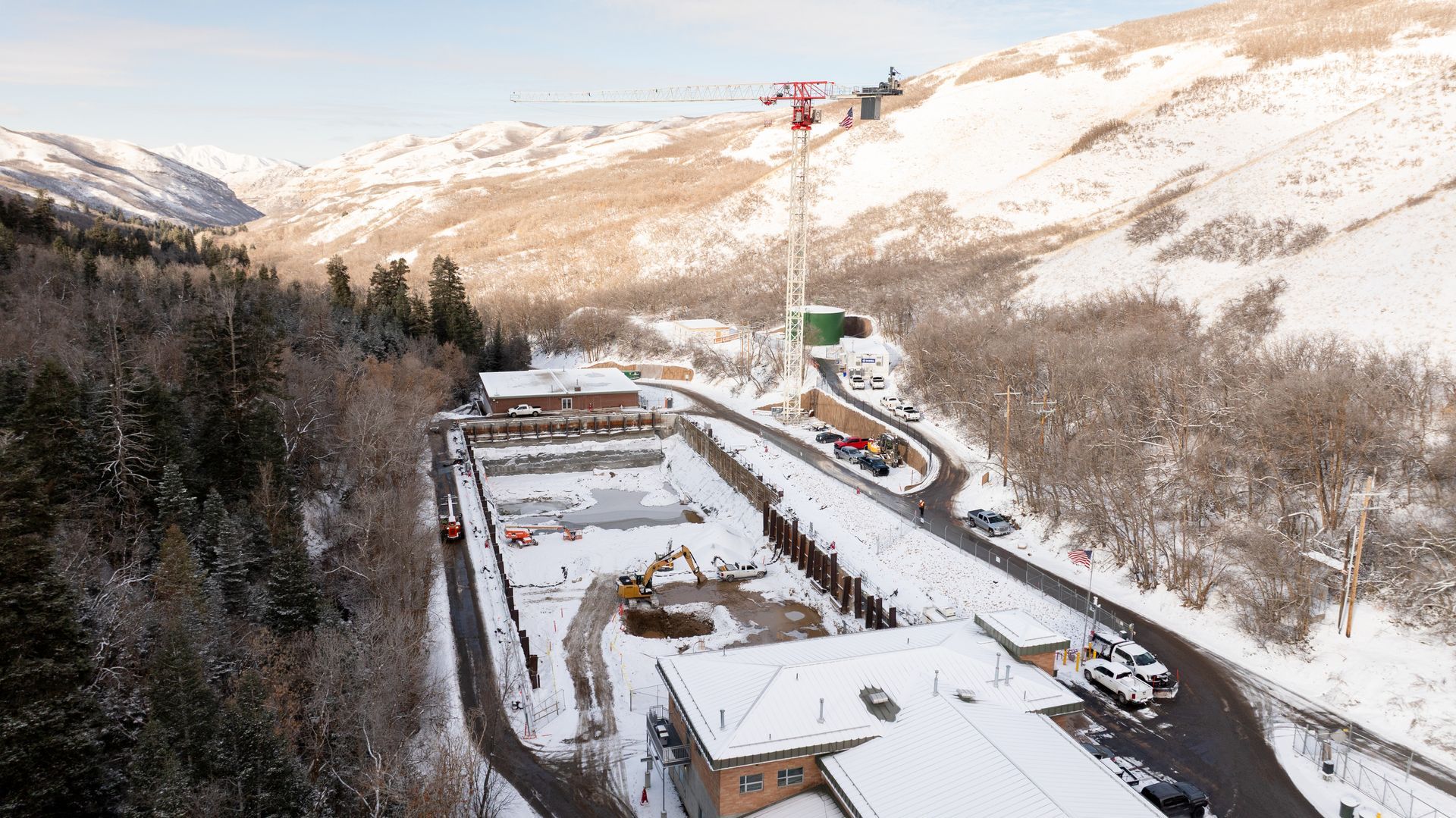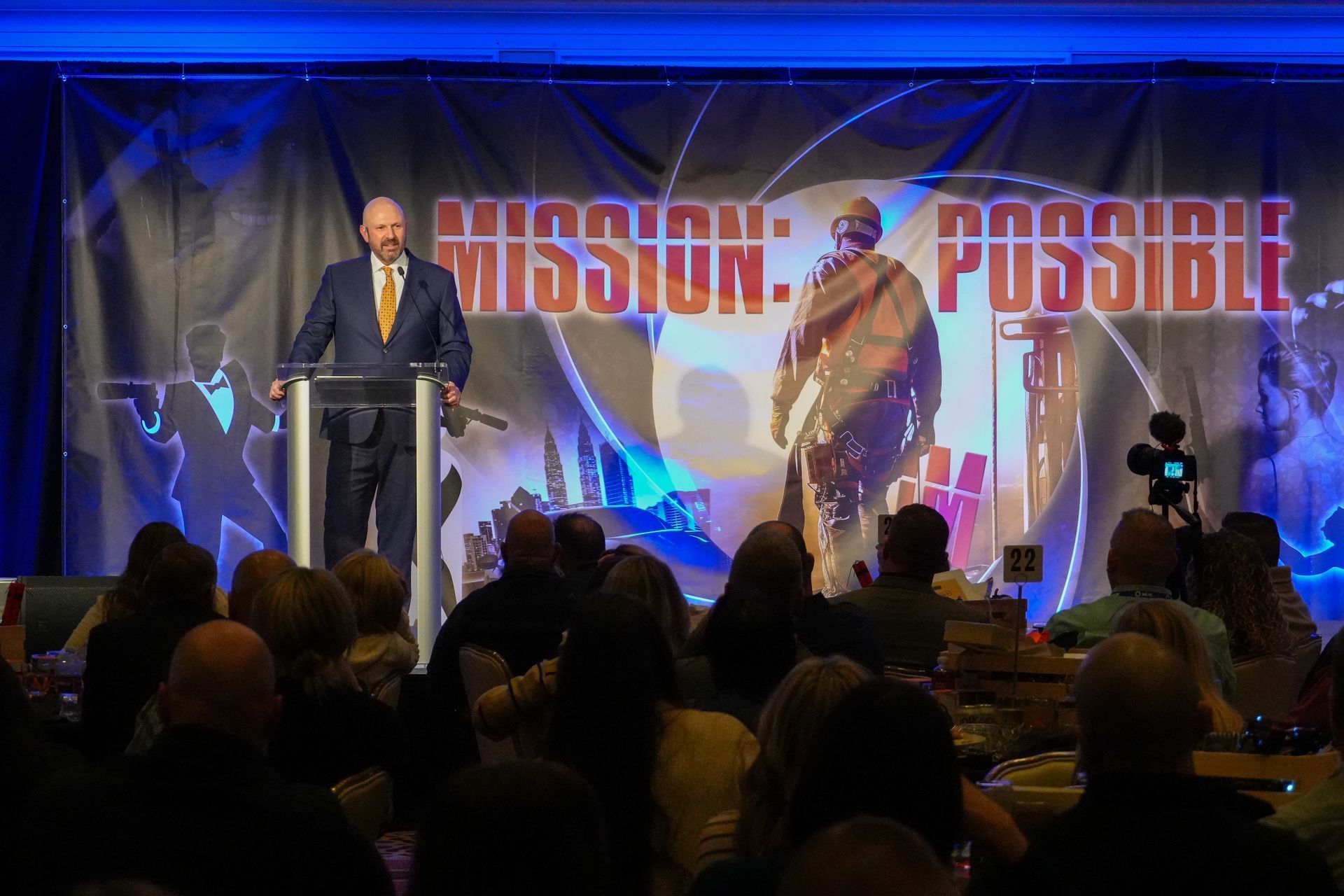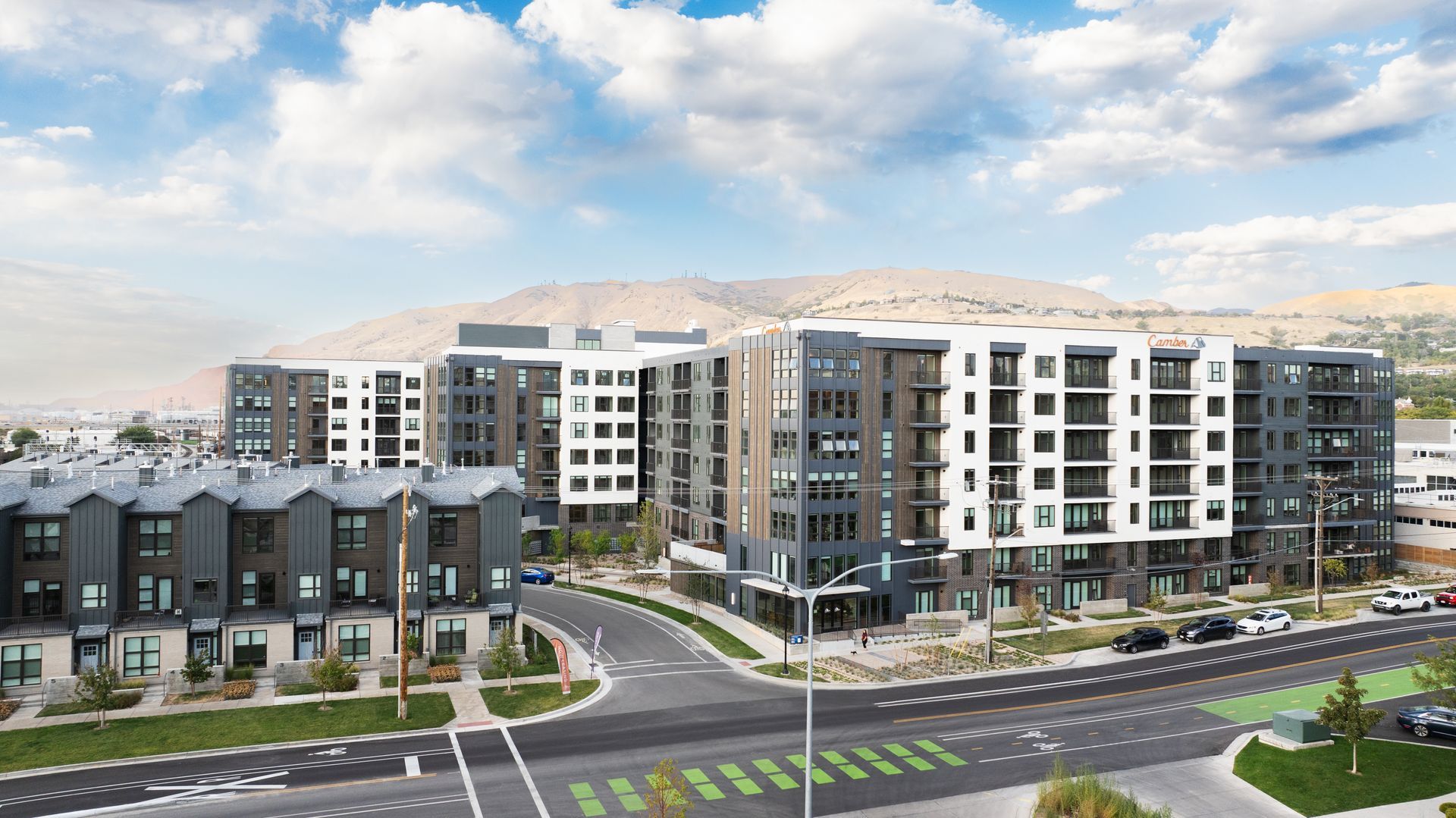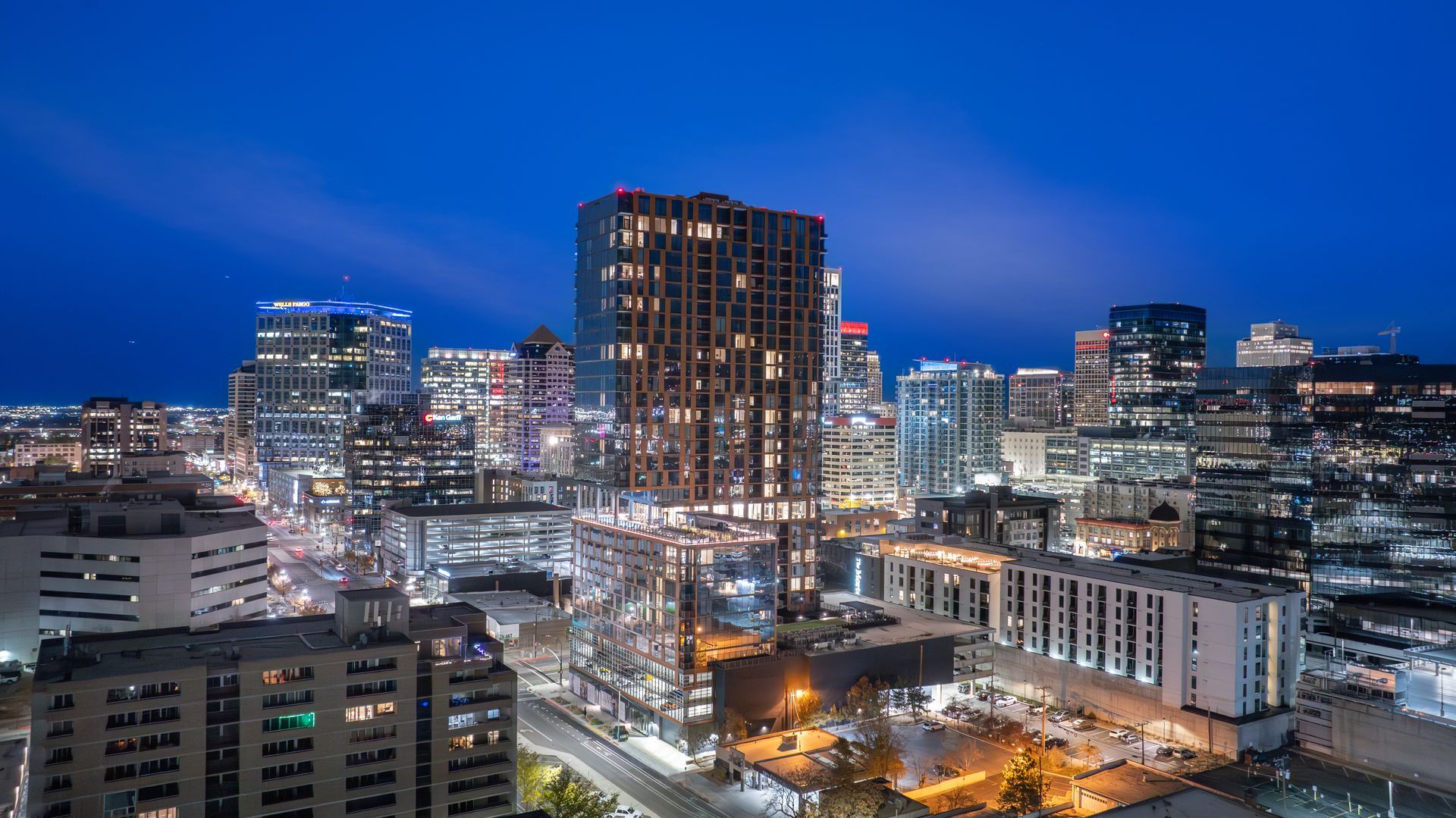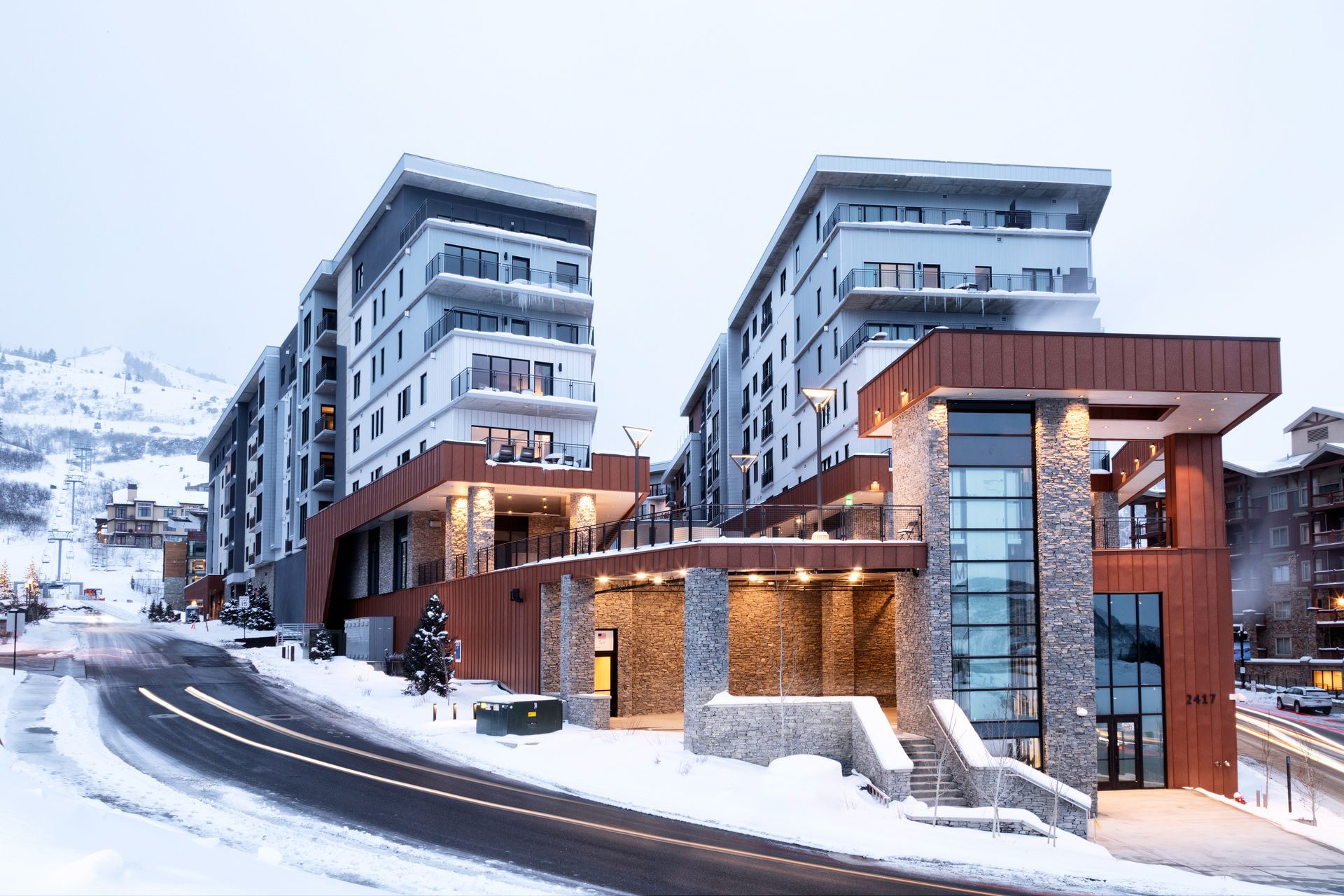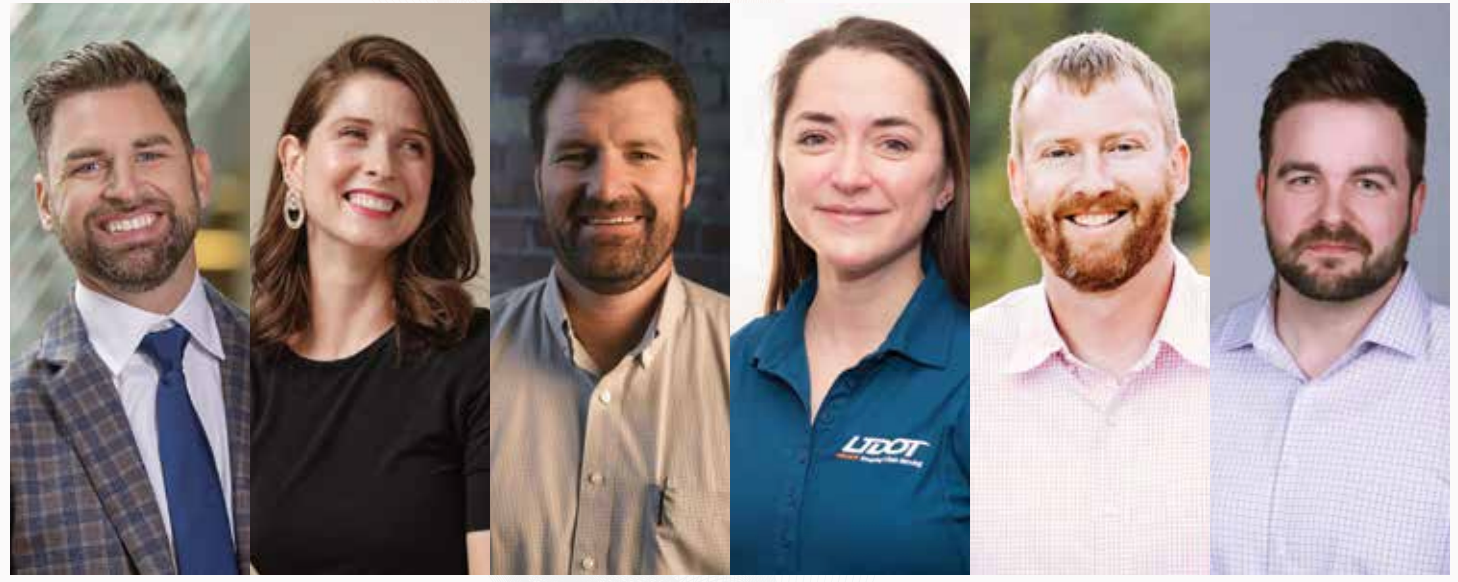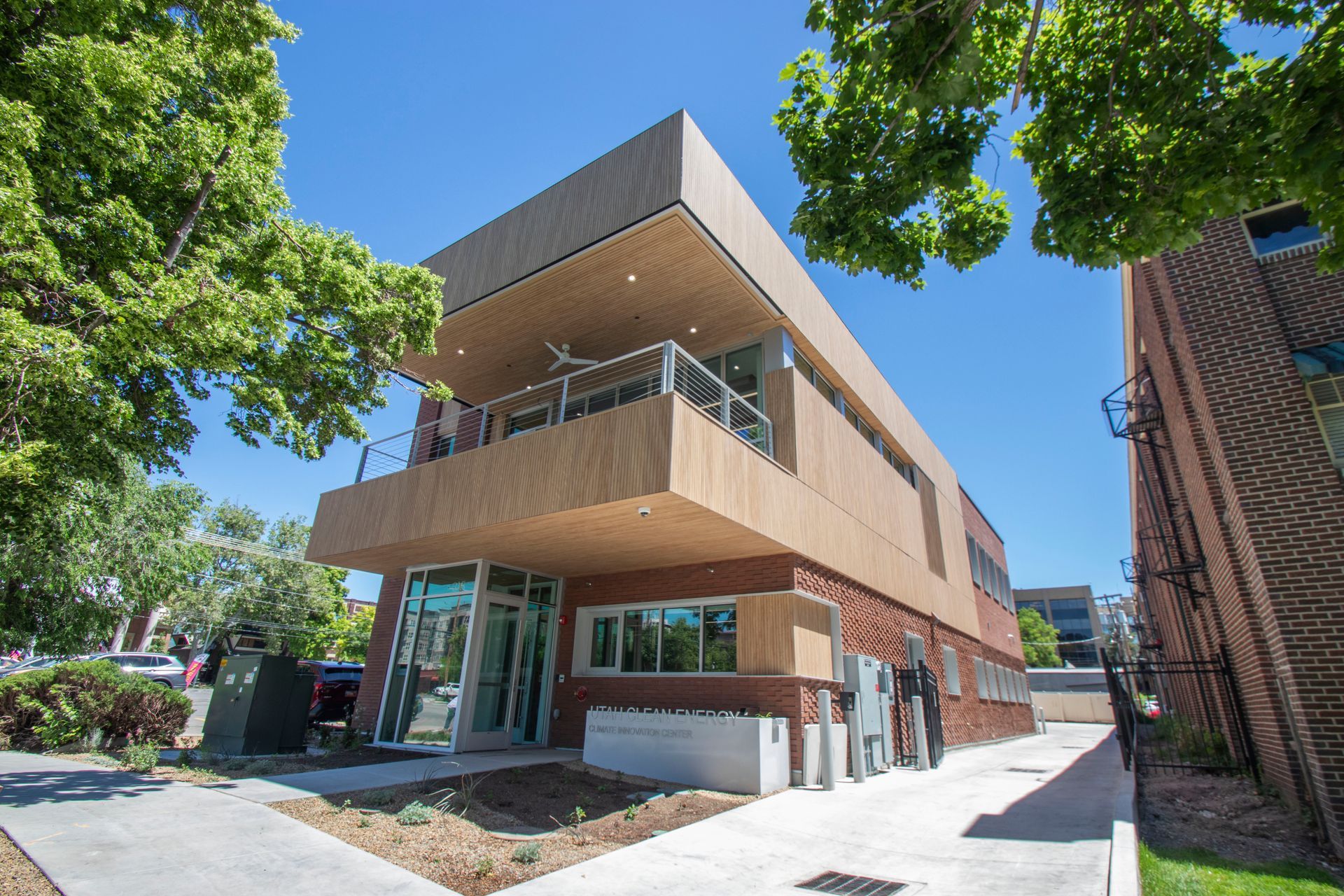Brett Nielsen
President, Whitaker Construction
(Top) The firm innovatively utilized a cable crane system on the North Fork Siphon project for CUWCD.
Whitaker Construction’s current Board of Directors (left to right): Ken Hamson, VP of Water/Wastewater Operations; Brandon Blanchard, VP of Heavy Civil Operations; Shane Albrecht, Senior VP of Construction; Rhett Tatton, VP of HSE/Risk Management; Judd Hamson, Executive VP; Brett Nielsen, President; Ryan Vaughn, VP of Human Resources; Dave Wickam, VP of Equipment Operations; Rex Keller, VP of Business Operations; Brent Hunziker, VP of Natural Gas. (photo by Holly Gibbons)
UC&D: Your company has long been known for its forward-thinking, innovative construction methods and ability to build some of the most challenging projects in the civil/municipal/utility market. Who led the charge on projects like the Ogden Canyon Siphon, which required you to hire professional climbers to aid construction workers, and the North Fork Siphon, which saw the firm purchase a special $1.2 million Austrian-made cable crane system for the job? What does it take to do these projects.
Nielsen: They are extremely challenging, complex, crazy projects. Judd came up with the concept on how to build them on both projects, Ken Hamson was the project manager. Their dad, Brian, retired at 49 years and 6 months. The Hamson family has been ingrained in this company 50+ years of the company's 70 years. It comes back to our teams—they build it according to our capability. At times there are unknowns, but it comes back to our trust in our people to build these projects. Dave Putman (CFO of Whitaker Holding Co.) once told me that if we don't have some losers (projects in the red) once in awhile, we're not pushing ourselves, we're being complacent. And he's right. We've embraced those projects we don't do as well on and turned it into learning opportunities that give us time to find out what to do better.
UC&D:
Whitaker Construction has long been a champion of the Associated General Contractors (AGC) of Utah. Rick Whitaker served as Secretary/Treasurer from 2000-02 and you have been on the Board of Directors of the local chapter, in addition to currently serving as a National Heavy/Highway Director and Past Board Member and Chair of AGC of America Utility Infrastructure Division. What do you enjoy about your participation in AGC and how does it benefit your company?
Nielsen: It's great camaraderie, and AGC helps bring to the forefront what is coming in our industry. Often times it's regulation, or it's laws that impact our ability to work profitably. People might think being involved on a national level isn't important, but I can tell you what happens in Washington, D.C. and in states like California impacts what we do in the markets in which we work.
UC&D:
Labor is a universal challenge in all building markets and a seemingly perpetual top concern for the construction industry. Your company seems to do a good job retaining talented workers. How do you achieve this? What are the most effective ways to recruit/retain new workers?
Nielsen: As projects are getting more difficult to build, it requires skilled labor. We've put an emphasis on workforce development, and we let employees know from the start there is a future here and we'll help them get to where they want to go with their careers. Our ESOP program is a differentiator. We will see our first million-dollar balances from some of our ESOP participants next year, which is cool in the fact that our ESOP started in 2007. An employee does not contribute a dollar to the program; it's a benefit to them. They receive equity in the company for their efforts and contributions. Our average participant balances increased last year 42% and over the last five years we've had four that have increased 30% or more year over year. It comes back to getting buy in and engagement from our employees. Once (employees) hit that five-year mark they start to see the value of Employee-Ownership.
UC&D:
What else are employees looking for out of a potential career employer?
Nielsen: We are also working on modifying our schedules to combat worker fatigue. We are transparent on what the job entails and invest in people from day one, putting them through OSHA 10 (course). Of our core values, the value that most resonates with me is "Elevate Team". I have always enjoyed being part of a team—I know that we are stronger together and can accomplish so much more by utilizing the strengths and talents of each individual. Whitaker has always had a camaraderie that made me feel part of something bigger than myself. The value of Elevating Team works hand-in-hand with one of my personal ambitions of being a servant leader in both my personal life and at Whitaker Construction. I truly believe that if I can help any teammate that I interact with see and live the Whitaker Way, I am doing my job.
Projects like the Ogden Canyon Siphon illustrate the firm’s ability to handle complex, highly technical construction work. (courtesy Whitaker)
